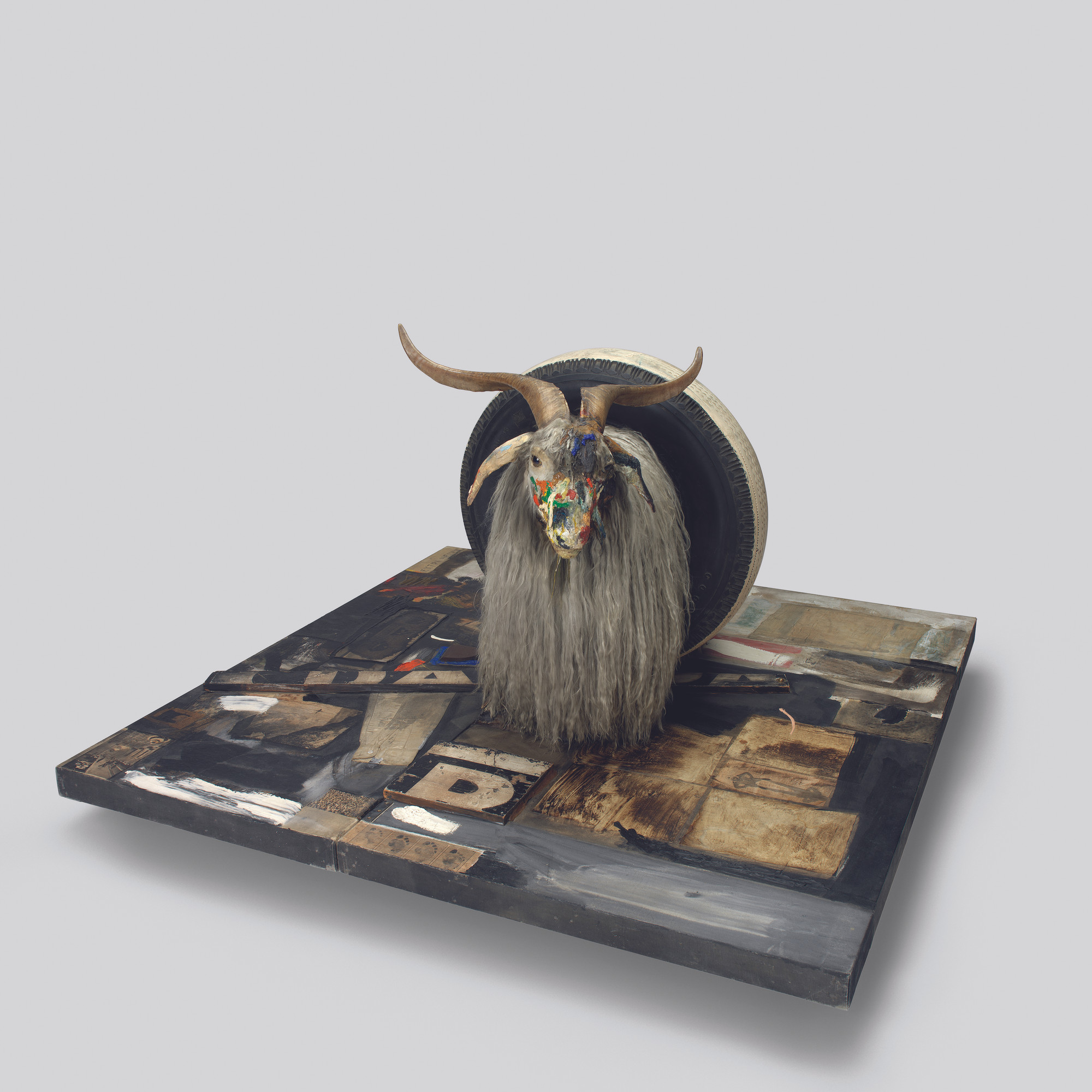Curator, Leah Dickerman: Here's Rauschenberg with the story of this work, Monogram.
Artist, Robert Rauschenberg: I was working with stuffed animals and it was more to, like, continue their life, because I always thought, it’s too bad they’re dead, and so I thought I can do something about that. There again I’m on the street (laugh) all my stories start “I was on the street,” and I pass this shop that was a second-hand office supply place. And I saw this magnificent goat there.
First, I tried to put it on a flat plane, and it was obviously too massive. It had too much character. It looked too much like itself that I couldn’t compete with my painting.
So I took it off the wall, put it out in the room and built an upright panel, but then it looked like he was a beast of burden. He kept looking as though he was supposed to pull it. He still refused to be abstracted into art. It looked like art with a goat. And so I put the tire there and then everything went to rest, and they lived happily ever after.
Leah Dickerman: Dancer and choreographer Yvonne Rainier remembers her first sighting of Monogram.
Yvonne Rainier: I went to I think it must have been his first show at the Castelli Gallery on East Seventy-seventh Street. I saw the goat. I always say I nearly rolled on the ground with laughter. It was so refreshing after Abstract Expressionism. I mean he was still an expressionist using paint in that way, but so irreverent. I think my own sense of humor and irreverence began when I saw that show, and it opened up a whole new set of possibilities.
